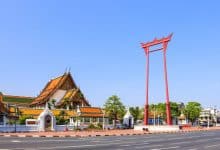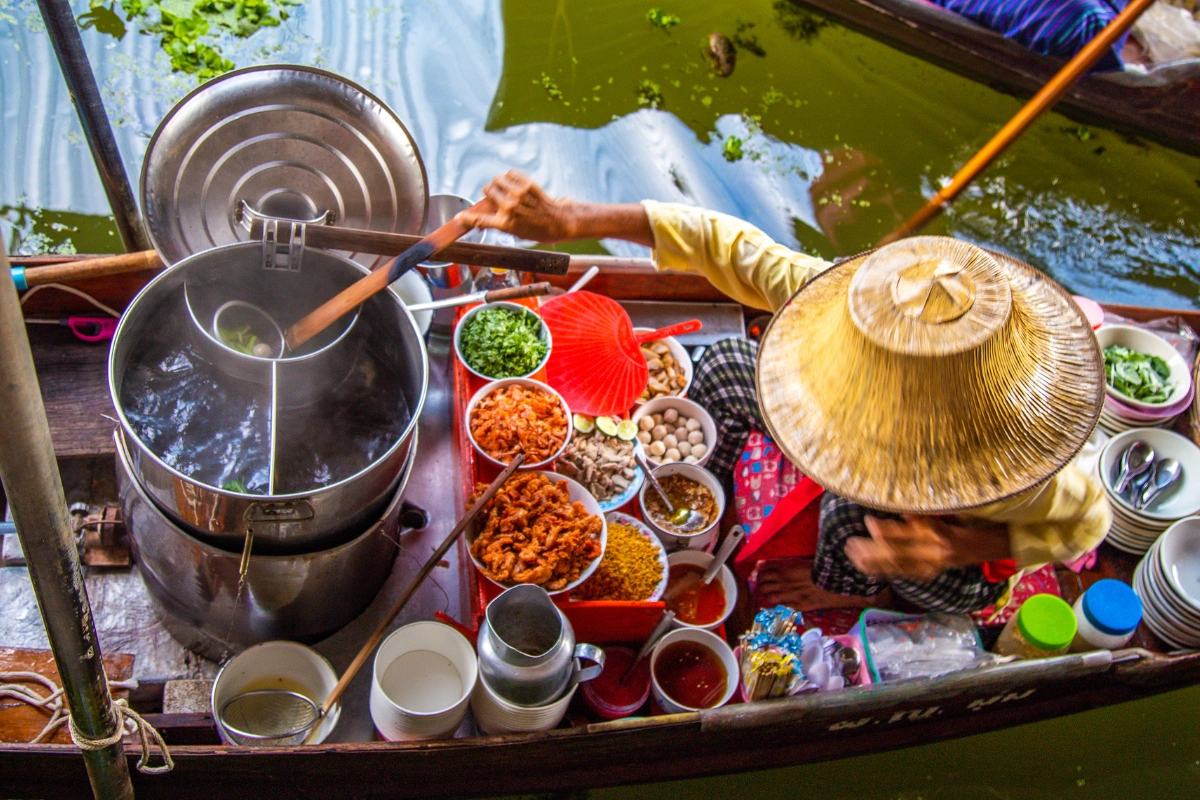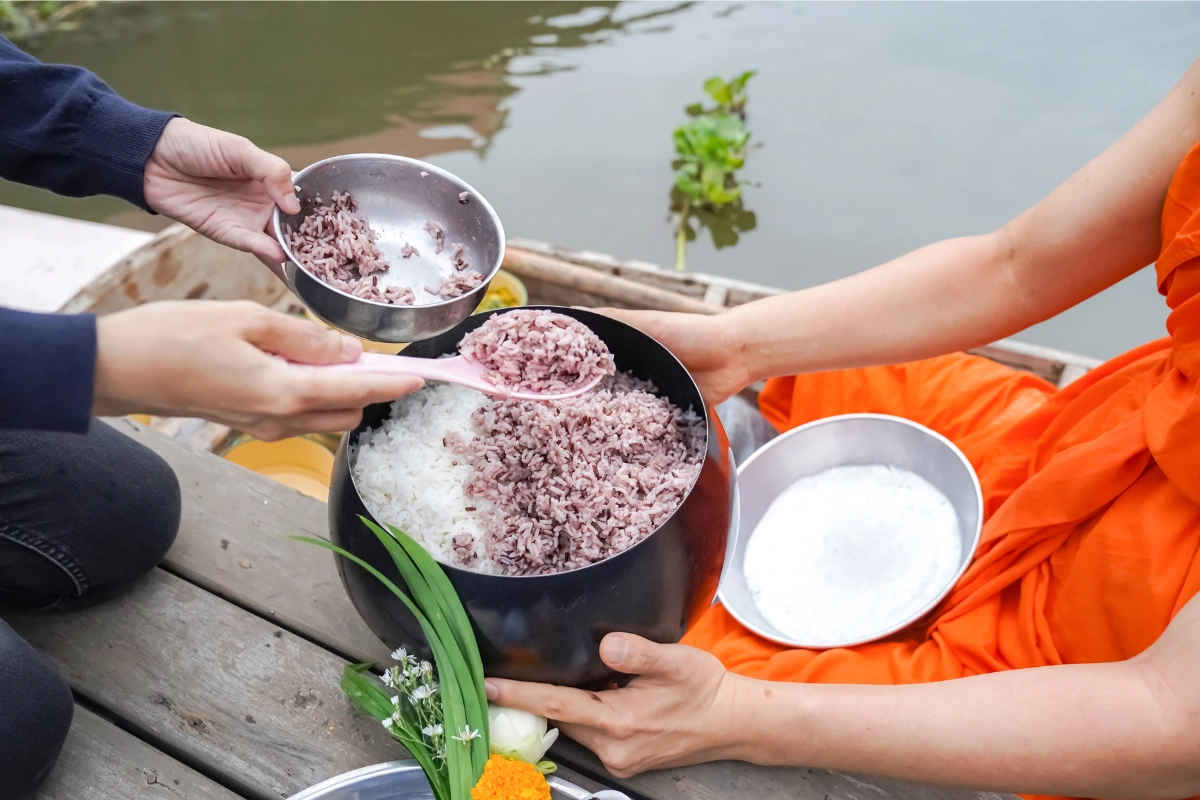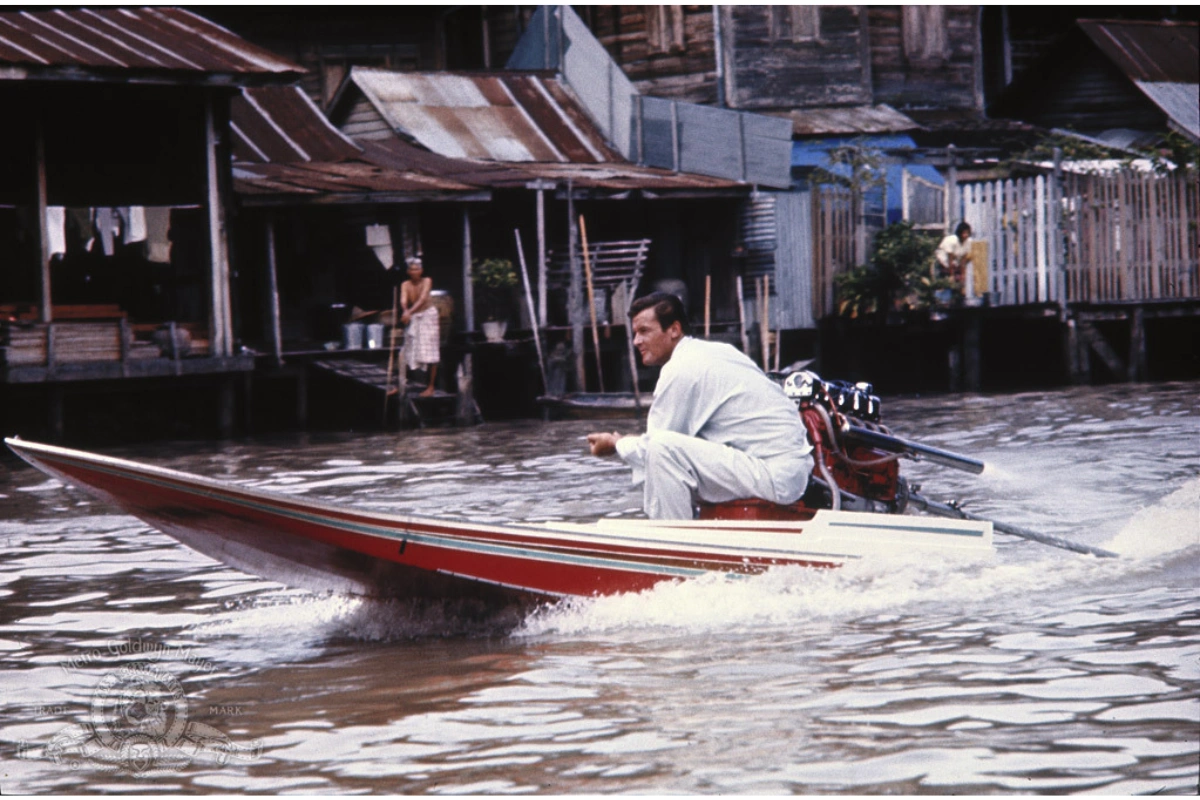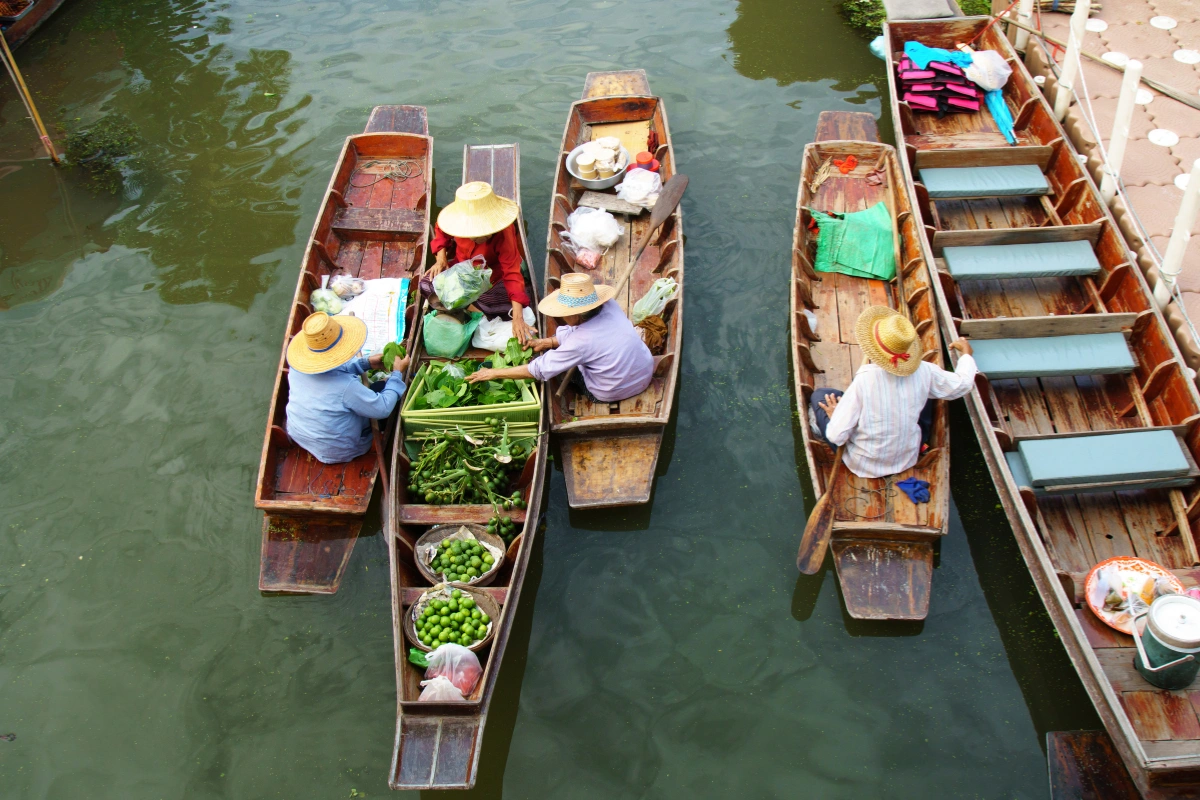10 interesting facts about the floating markets in Thailand
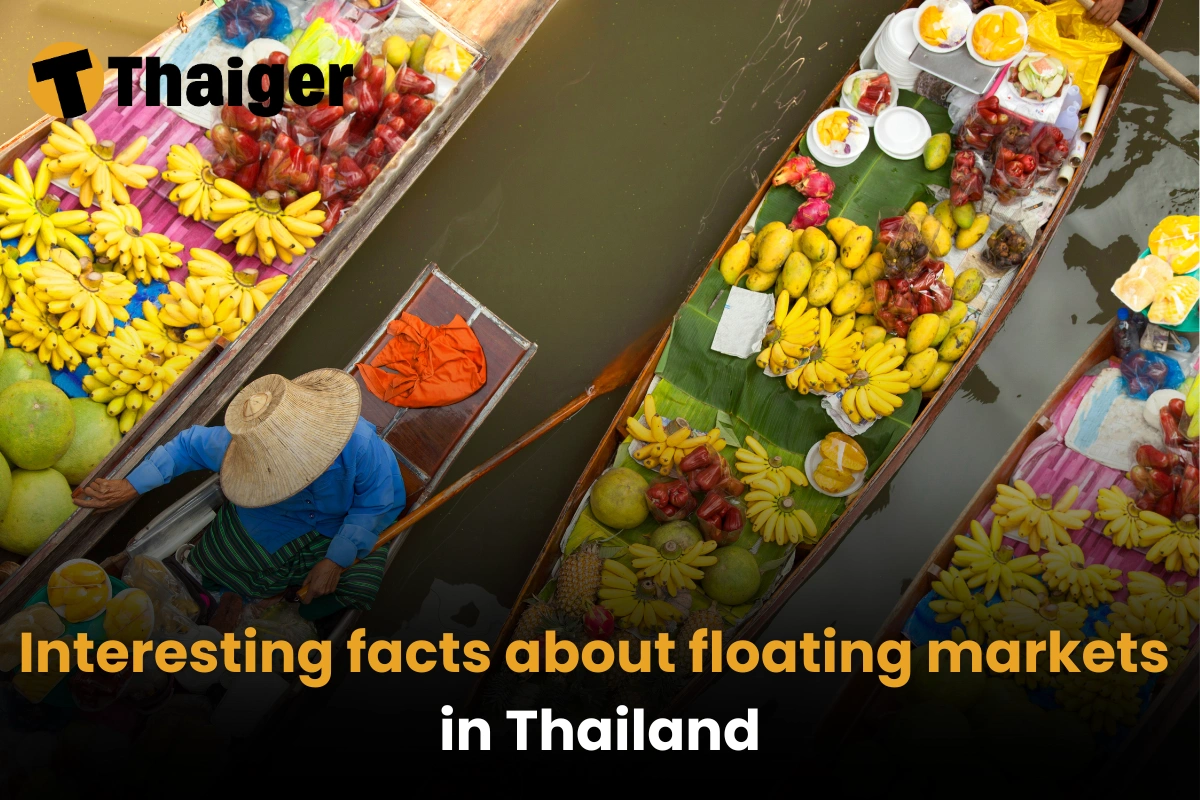
Floating markets in Thailand are an important part of the country’s culture, blending tradition with tourism. These markets began when boats were used for daily travel and trade, and today they are popular attractions for visitors. Markets like Damnoen Saduak, Amphawa, and Khlong Hae Floating Markets are lively places where vendors sell fresh produce, local dishes, and handmade items from their boats. These floating markets allow visitors to experience Thai culture up close, offering a glimpse into a traditional way of life that still thrives today.
Here are some interesting facts that you may or may not know about the floating markets in Thailand.
Interesting facts about the floating markets in Thailand
1. Floating markets in Thailand have ancient roots
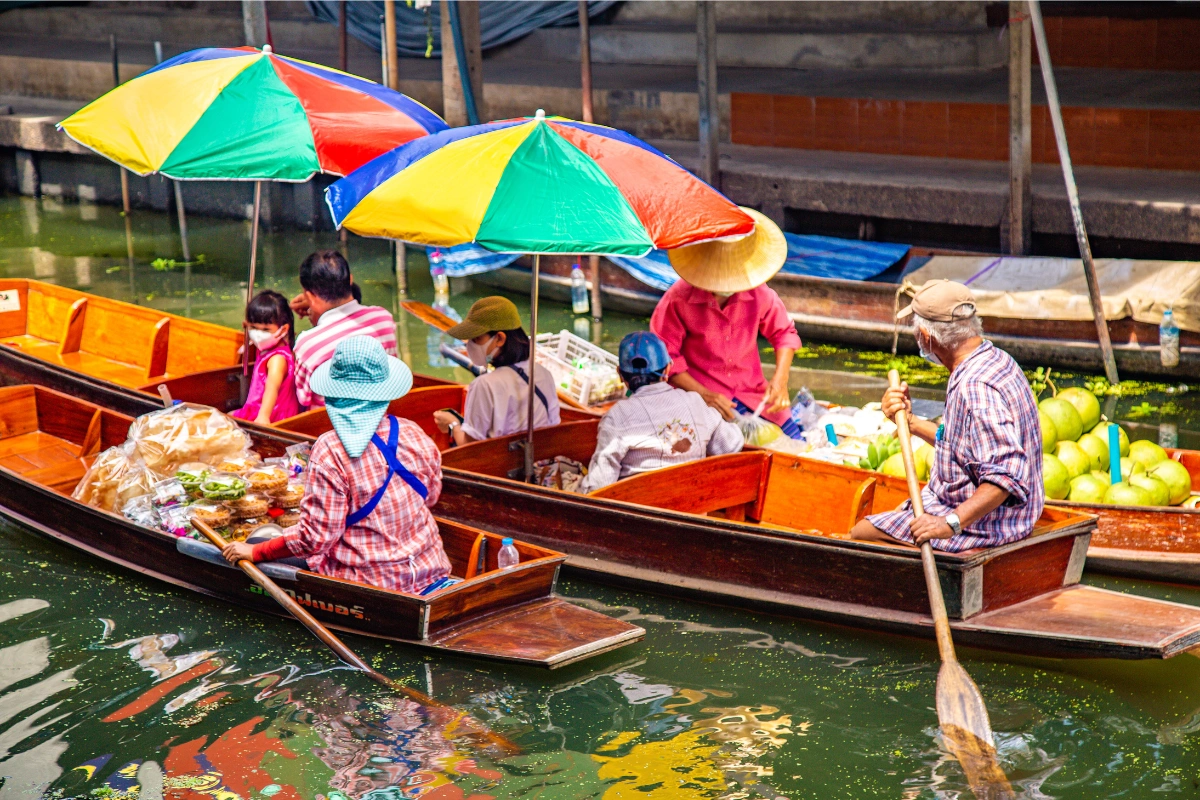
Floating markets in Thailand have a long history that started during the Ayutthaya Period (1350-1767). Back then, rivers and canals were the main ways to travel and trade, so floating markets became important gathering places for farmers and traders. These markets reflected the agricultural richness of Thailand and the simple lifestyle of riverside communities. People would gather to exchange fruits, vegetables, and handmade goods, creating busy centres of local trade.
During the Rattanakosin Period (1782-1868), floating markets continued to thrive, especially in the Chao Phraya River Basin. They played a key role in the economy and brought people together in a lively setting. However, things started to change in the mid-20th century as roads and railways were built. Many people began to use land transport instead, leading to the decline of traditional floating markets, with many closing or moving to land-based areas.
In the late 1960s, some floating markets were revived as tourist attractions. For example, the Damnoen Saduak Floating Market was redesigned to attract tourists with the help of the Tourism Authority of Thailand. This changed their purpose—from being local trading centres to becoming popular tourist spots. Today, floating markets still show a part of traditional Thai life but have also adapted to meet the interests of tourists to keep up with the changing times.
2. Floating markets can be questionably authentic
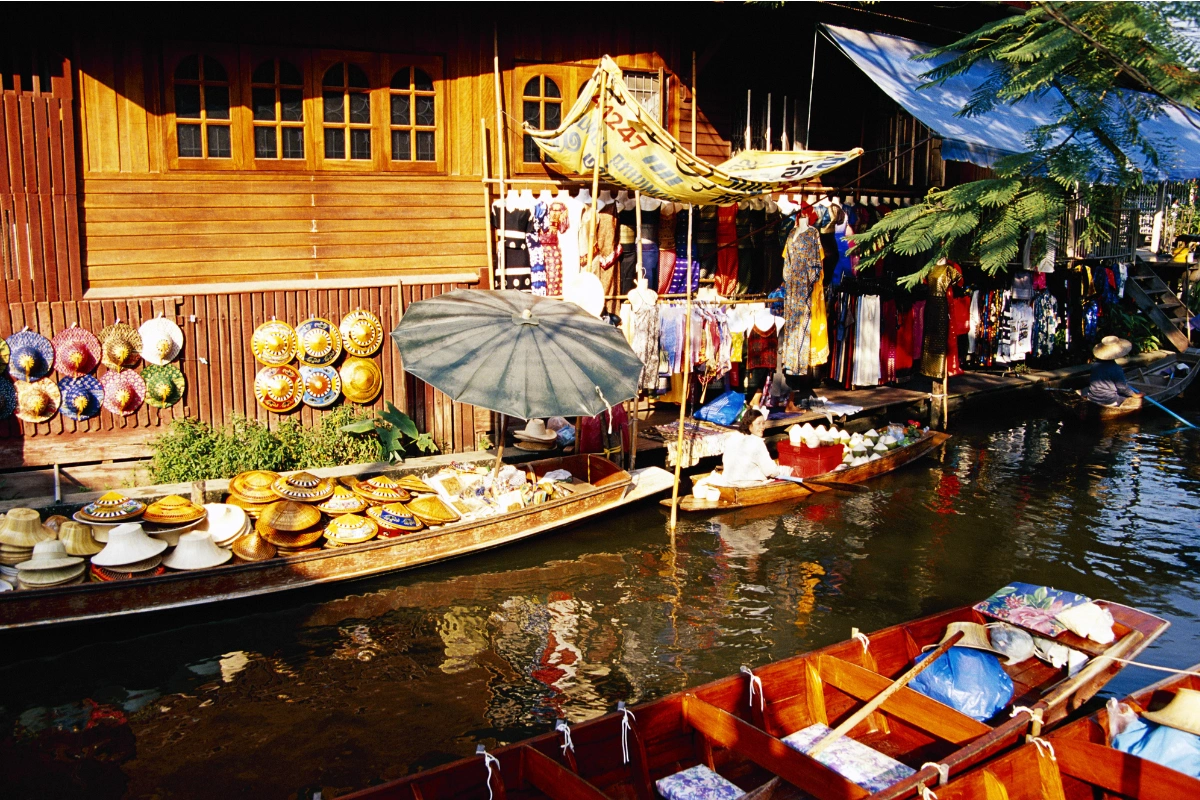
Floating markets in Thailand are a special mix of trade, culture, and local life, where vendors sell goods straight from their boats. This traditional type of market started when rivers and canals were the main ways for people to travel and trade. Traders use small wooden boats loaded with fresh fruits, vegetables, cooked foods, and handmade crafts, making these markets colourful and lively. These markets not only attract tourists but also remain popular among locals.
The floating market concept is about preserving a traditional way of life while also catering to modern tourism. Vendors often wear traditional clothing and use old-style ways of displaying their goods, which adds to the cultural charm for visitors.
While floating markets have changed over time to meet the needs of tourists, they still offer a look into Thailand’s rich culture. They show how Thai people have managed to keep their traditions alive while adjusting to new times and are a symbol of the close relationship between the Thai people and their waterways,
3. Most of the Floating markets in Thailand are located in and around Bangkok
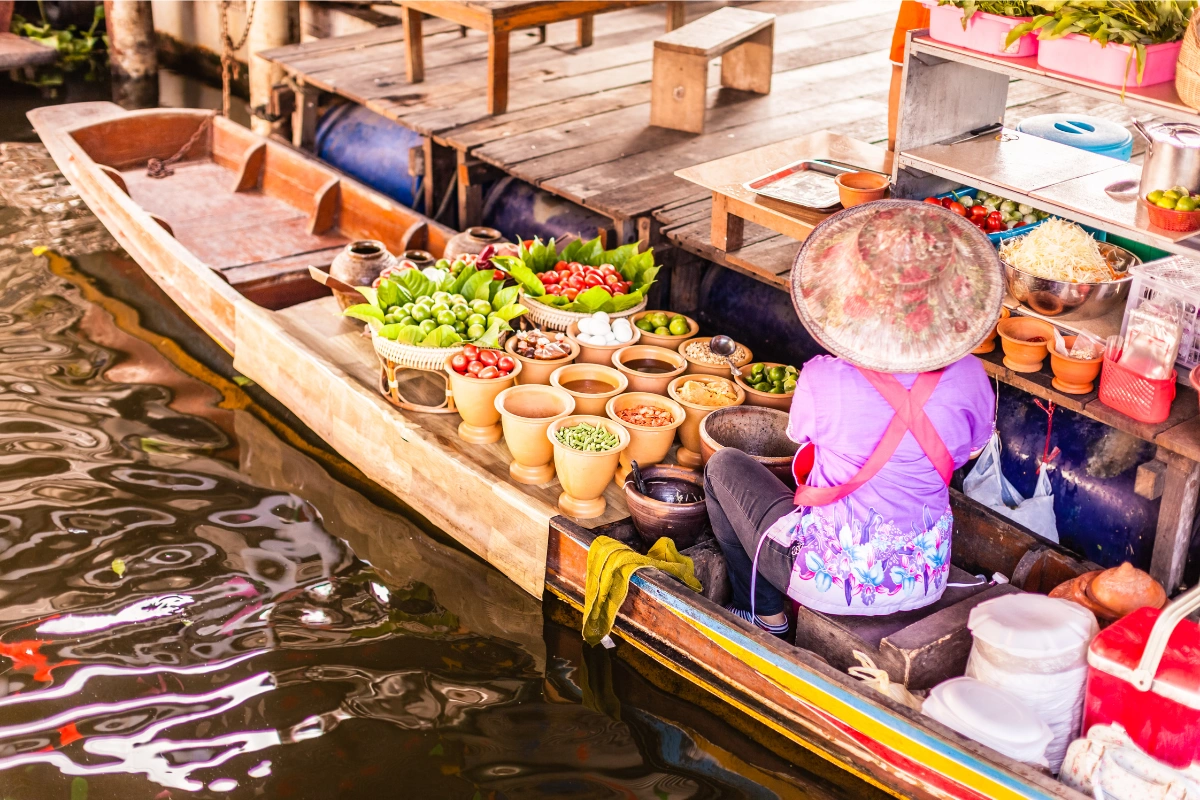
Floating markets in Bangkok exist because of the city’s network of canals, known as khlongs, which played a key role in its early development. These canals were created over 600 years ago to help with land drainage, prevent flooding, and serve as transport routes. During a time when roads were limited, the khlongs were the main way to move goods and people in and around the city.
Since boats were the most efficient way to travel and transport goods, floating markets began to form along these waterways. They became essential trading hubs where people could easily buy and sell items like fruits, vegetables, pottery, and textiles. For many residents who lived in houses on stilts along the canals, boat-based trading was especially convenient since they could access the markets right from their homes.
As Bangkok grew, these floating markets became an important part of the community, both economically and socially. However, in the 1920s, as more roads were built and cars became popular, many canals were filled in, and the importance of floating markets began to decline. Today, some floating markets have been preserved or revived for mainly tourism purposes.
4. Canals in the floating markets are surprisingly not too deep
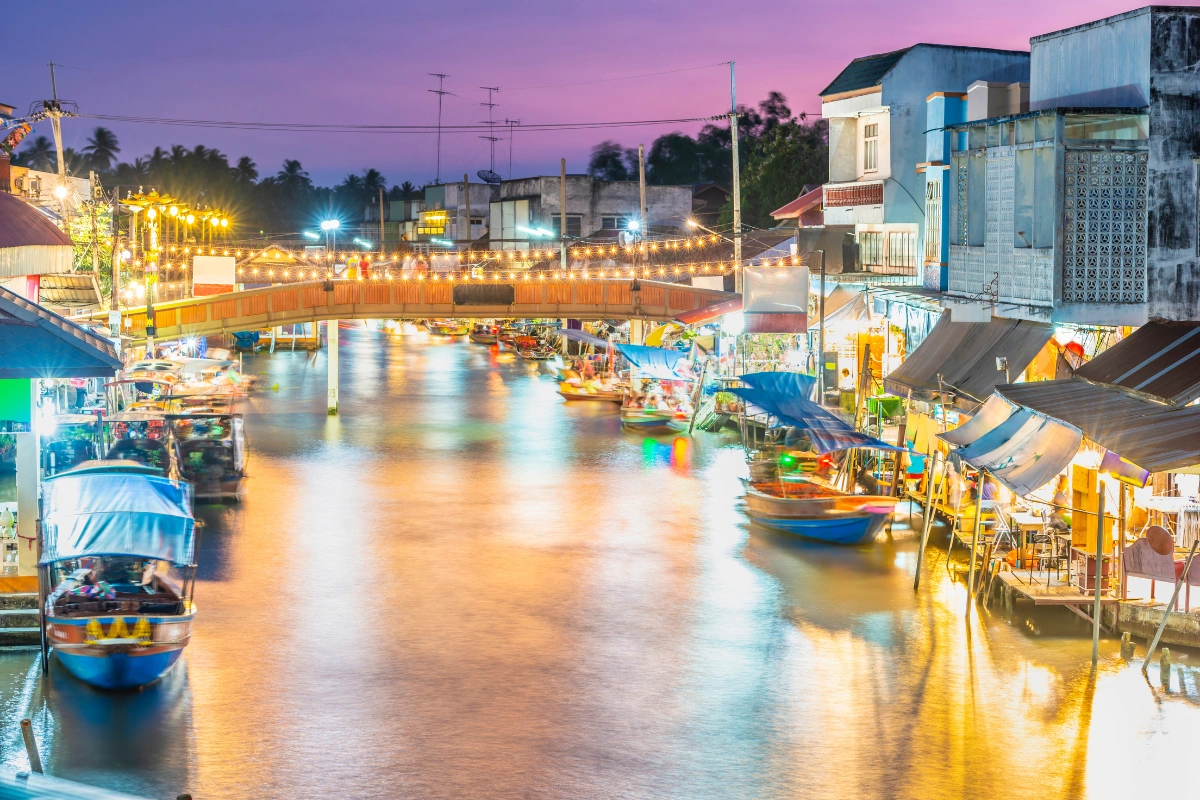
The canals at floating markets in Thailand are typically between 1 to 3 metres deep (around 3 to 10 feet). This depth is just right for boats to move safely. However, the depth of these canals can change depending on the season and location. During the rainy season, which lasts from May to October, water levels rise, making the canals deeper.
On the other hand, in the dry season, the water levels drop, which can make some canals shallower and may impact boat movement. The depth can also differ between floating markets; for instance, larger markets like Damnoen Saduak tend to have deeper canals compared to smaller markets.
To keep these floating markets functioning well for both trade and tourism, regular maintenance, such as dredging, is done to maintain the necessary depth. This ensures that these water-based markets remain accessible year-round, regardless of seasonal changes.
5. Floating markets are perfect for visiting with the family
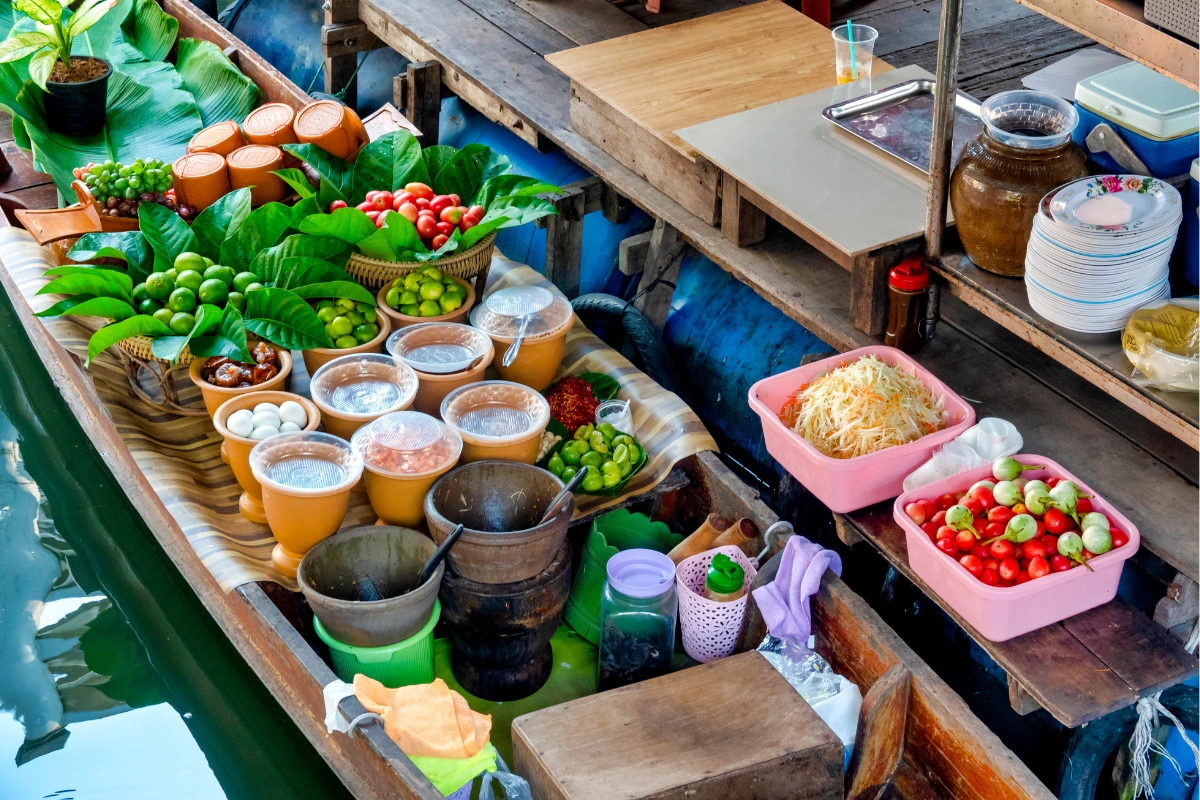
Families visiting Thailand will find that the floating markets are perfect for an outing. With a lot of available choices, here are a few that we would suggest that you should visit:
Taling Chan Floating Market
Taling Chan is a great choice for families who want a quiet and easy experience. It’s not too crowded, and there’s plenty of shaded seating where you can relax and enjoy fresh seafood or local snacks. Parents with strollers will find it easy to move around, and kids will love the short boat rides along the calm canals. The market has a laid-back vibe, with traditional Thai music adding to the charm.
Damnoen Saduak Floating Market
If you’re looking for excitement, Damnoen Saduak is perfect. This famous floating market is full of colourful boats selling fresh fruit, tasty Thai food, and souvenirs. It’s lively and busy, which makes it fun for kids who love exploring. The boat rides here are a highlight, giving you a chance to see the market from the water and feel the energy up close.
Amphawa Floating Market
Amphawa Floating Market is all about the evening magic from the peak hours of 6pm to 8pm. It’s smaller and less hectic, making it ideal for families who want a more relaxed experience. As the sun sets, the market lights up with twinkling lights, creating a cosy and magical atmosphere. You can stroll along the canals, try local snacks, and enjoy cultural performances. Boat rides at night are a treat, offering beautiful views of the area.
6. The name ‘floating market’ is a misnomer
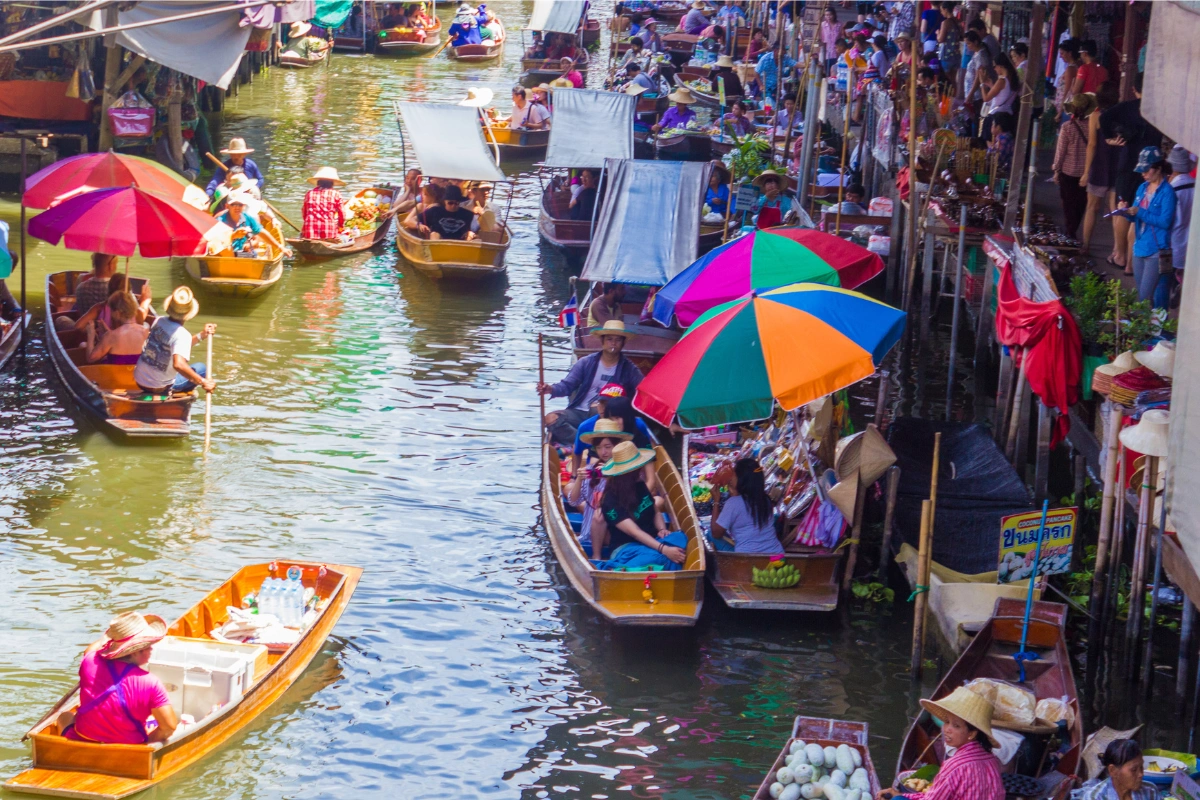
The Thai phrase for “floating market” is “ตลาดน้ำ” (Talàat Nám), which translates to “water market.” It combines two words: “Talàat” (ตลาด), meaning “market,” and “Nám” (น้ำ), meaning “water.” The name perfectly describes these markets that operate on or near the water.
Pronouncing it is pretty straightforward:
- Talàat: Emphasise the second syllable, like ta-LAAT.
- Nám: Say it with a long “a” sound, like NAAM.
Interestingly, floating markets were originally called “ตลาดนัด” (talaat nat), which means “market on appointment.” This was because they only operated on specific days, unlike today when many are open on weekends. Over time, “Talàat Nám“ became more popular, focusing on their unique water-based setting.
Latest Thailand News
Follow The Thaiger on Google News:
